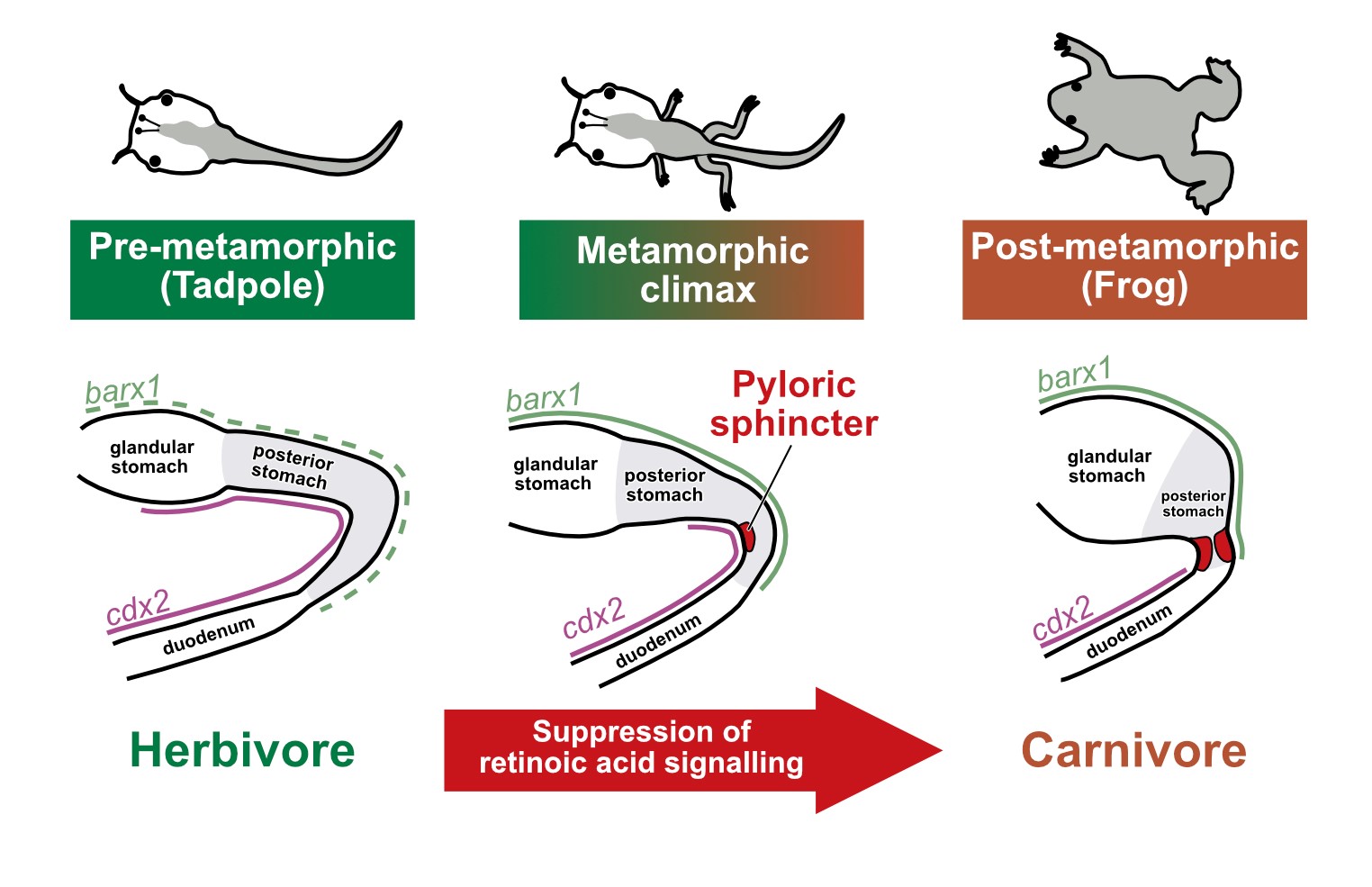DATE2024.10.29 #News
Mechanism of pyloric sphincter formation during tadpole-to-frog metamorphosis
Summary
The digestive tracts of vertebrates have evolved into diverse morphologies according to their food habits. In many frogs and toads, the diet changes from herbivorous to carnivorous during metamorphosis from larvae (tadpoles) to adults (frogs). During metamorphosis, the intestine is shortened to one-fourth in length to accommodate carnivory, the intestinal epithelium is covered with villi, the stomach secretes the proteolytic enzyme pepsin, and a pyloric sphincter is formed to compartmentalize the stomach and intestine. Although the molecular mechanisms of intestinal metamorphosis have been extensively studied, molecular studies of gastric metamorphosis have been scarce, and in particular, the mechanism by which pyloric sphincter formation is induced during metamorphosis rather than during embryogenesis or larval stages has not been analyzed.
In this study, a research group led by Graduate School of Science students Kei Nagura (at the time of the study) and Takafumi Ikeda (at the time of the study, currently a researcher at the Institute for Protein Dynamics, Kyoto Sangyo University) and Associate Professor Masanori Taira (at the time of the study, currently at Chuo University) at The University of Tokyo has conducted detailed morphological observations of the pyloric sphincter formation in the African clawed frog (Xenopus laevis), and accurately described the position of the pyloric sphincter and its developmental process. Furthermore, through comprehensive gene expression analysis of the pre-metamorphic and metamorphic climax stages, we identified a number of transcription factors that may be involved in pyloric sphincter formation, and newly discovered the possibility that the regulation of retinoic acid signaling is important for the metamorphosis-associated pyloric sphincter formation (Figure).
The findings of this study not only propose a new mechanism for metamorphosis- associated morphogenesis in frogs, but also could provide clues to answer the difficult question in evolutionary biology of the diversification of gastrointestinal tract morphology according to diet.
The research results were published online in Developmental Biology, the official journal of the American Society for Developmental Biology, on September 21, 2024.

Figure: Overview of the results of this research
Links: Kyoto Sangyo University, National Institute for Basic Biology, Teikyo University, Chuo University(in Japanese)
Published Journals
-
Journal name Developmental biologyTitle of paper


